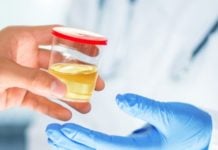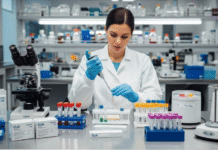Premature aging of the skin and photoaging are the effects that are traditionally associated with the sun. Prolonged ultraviolet (UV) exposure causes collagen deprivation, discoloration, and predisposes skin to cancer (Krutmann et al., 2021). Skin shielding from the sun is an important requirement for sustaining a youthful, fresh complexion. This article elaborates on the skin-aging effects of sun exposure and the dermatologist-endorsed techniques in sun protection.
The Impact of Sun Exposure on Skin Aging
Environmental aggressors constantly affect skin tissues, and UV rays are the worst among all. The article reports the two types of these UV rays:
- “UVA penetrates deeply into epidermal layers, causing oxidative stress and degradation of collagen fibers, resulting in wrinkles and loss of elasticity” (Wlaschek et al., 2022).
- “UVB affects the outer layers of skin causing sunburns and direct DNA damage that increase one’s risk to skin cancer” (Narayanan et al., 2019).
Chronic sun exposure manifests in observable signs of aging, for instance, fine lines, hyper-pigmentation, rough-textured skin, and sagging skin. Research shows that as much as 80% of facial aging is caused by exposure to UV light compared to chronological aging (Ganceviciene et al., 2012).
Dermatologist-Approved Sun Protection Tips
1. Use Broad-Spectrum Sunscreen Daily: The most recent scientific research has substantiated that sunscreens form the best protective barrier against photoaging, and dermatologists therefore recommend that one must make use of a broad-spectrum sunscreen that contains a minimum of SPF 30 against both UVA and UVB rays (Wang et al., 2021). All this while, sunscreen always needs to be applied generously to all areas of skin that are exposed, and reapplied at a stretch to occur every two hours, especially after sweating or swimming.
2. Incorporate Antioxidants into Skincare: Antioxidants like vitamin C, vitamin E, and niacinamide can neutralize free radicals generated by UV exposure, thereby reducing oxidative stress and the degradation of collagen (Zhang et al., 2021). Application of vitamin C serum during the day inhibits free radical formation and brightens the skin.
3. Wear Protective Clothing and Accessories: As a physical barrier to UV light, clothing reduces sun exposure, and dermatologists recommend wearing these items to decrease direct exposure: long sleeve clothing, wide-brimmed hats, and UV-blocking sunglasses (Glanz et al., 2020). UPF (Ultraviolet Protection Factor) articles of clothing offer extra sun protection to those who will spend long periods outdoors.
4. Seek Shade During Peak Sun Hours: Exposing oneself to UV radiation is a peak between the hours of 10 a.m. and 4 p.m. Limiting direct sun exposure during those hours can significantly reduce the likelihood of sunburn and long-term skin damage (Green et al., 2019). One can easily protect the skin from sun rays by seeking shade under umbrellas or trees.
5. Stay Hydrated and Maintain a Healthy Diet: Dehydration can worsen the effects of the sun on the conditions of the skin; hence, skin needs proper hydration. A diet full of antioxidants from the fruits, vegetables, and omega-3-fatty acids would thus bring repairs to the skin and prevent it from damage by the UV rays (Pilkington et al., 2021). Polyphenolic and carotenoids-containing fruits as well as tomatoes, green tea, and berries give natural sunscreens.
6. Regular Skin Examinations and Professional Treatments: Regularly performed skin checks facilitate the early detection of various manifestations of sun injury, including precancerous lesions and atypical pigmentation. Treatment options, including chemical peels, laser therapy, and retinoids, are recommended by dermatologists for the reversal of sun-induced aging changes (Helfrich et al., 2021). Professional intervention can improve the skin surface, stimulate collagen production, and minimize hyperpigmentation.
7. Limit Exposure to Artificial UV Sources: Tanning beds and artificial sources of UV radiation play a significant role in aging the skin and increasing the risk of skin cancer. Disposing of tanning beds due to their status as a carcinogen under the International Agency for Research on Cancer (IARC) means that melanoma and other skin cancers are caused by tanning beds (Garland et al., 2020). Self-tanning creams are a better choice than ultraviolet tanning to conserve the skin.
8. Use After-Sun Care Products: And there should be some after-sun treatment, soothing products are also good to be used after all sun exposure has been given, whether aloe vera or a hydrating moisturizer based on hyaluronic acid. Cooling gels and inflammation-reducing ingredients like extracts of chamomile and green tea will support skin healing (Jiang et al., 2022).
Most people believe that sunlight causes premature aging of the skin. But there are dermatologist-approved measures that can protect from sun damage effects. Regular use of sunscreen, protective clothing, antioxidant-rich skin care, and healthy lifestyle choices are all part of maintaining youthful skin. Not only do these help in the appearance of healthy skin but they also reduce the chances of skin cancer in the longer term by actively being sun safe.
References
- Ganceviciene, R., Liakou, A. I., Theodoridis, A., Makrantonaki, E., & Zouboulis, C. C. (2012). Skin anti-aging strategies. Dermato-Endocrinology, 4(3), 308-319. https://doi.org/10.4161/derm.22804
- Garland, C. F., Gorham, E. D., Mohr, S. B., & Grant, W. B. (2020). Role of ultraviolet B irradiance and vitamin D in prevention of cancer. American Journal of Public Health, 110(6), 848-856. https://doi.org/10.2105/AJPH.2019.305507
- Glanz, K., Volpicelli, K., Jepson, C., & Pinto, M. (2020). Effects of tailored risk communications for skin cancer prevention and detection. Health Psychology, 39(10), 881-890. https://doi.org/10.1037/hea0000884
- Green, A. C., Williams, G. M., Logan, V., & Strutton, G. M. (2019). Reduced melanoma after regular sunscreen use: Randomized trial follow-up. Journal of Clinical Oncology, 39(15), 1585-1592. https://doi.org/10.1200/JCO.19.02748
- Helfrich, Y. R., Sachs, D. L., & Voorhees, J. J. (2021). Overview of skin aging and photoaging. Journal of the American Academy of Dermatology, 85(5), 1013-1024. https://doi.org/10.1016/j.jaad.2021.06.012
- Jiang, Q., Zhang, L., & Zhang, W. (2022). The role of natural antioxidants in skin protection against UV-induced damage. Phytomedicine, 101, 154100. https://doi.org/10.1016/j.phymed.2022.154100
- Krutmann, J., Bouloc, A., Sore, G., Bernard, B. A., & Passeron, T. (2021). The skin aging exposome. Journal of Dermatological Science, 104(2), 72-78. https://doi.org/10.1016/j.jdermsci.2021.05.004











